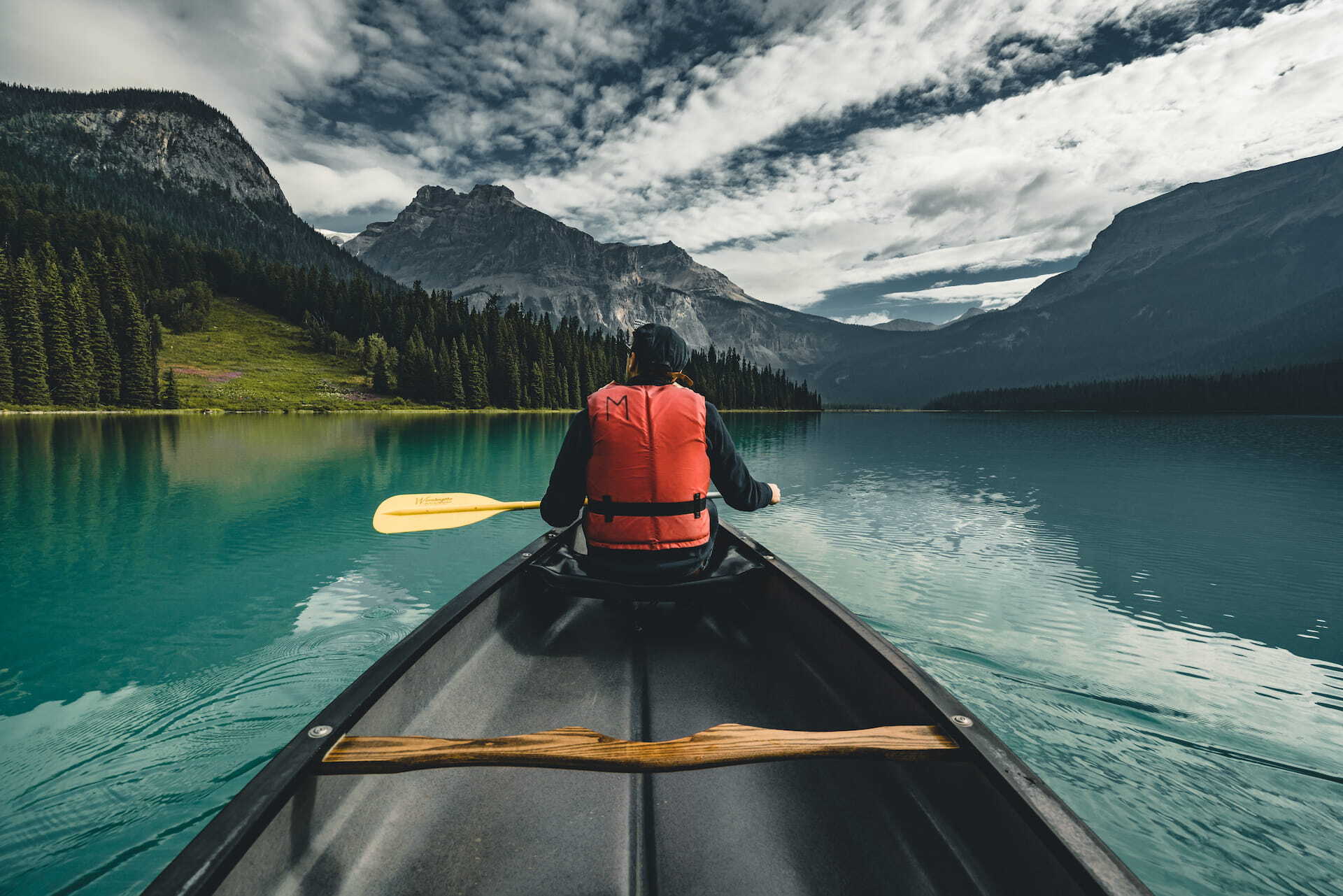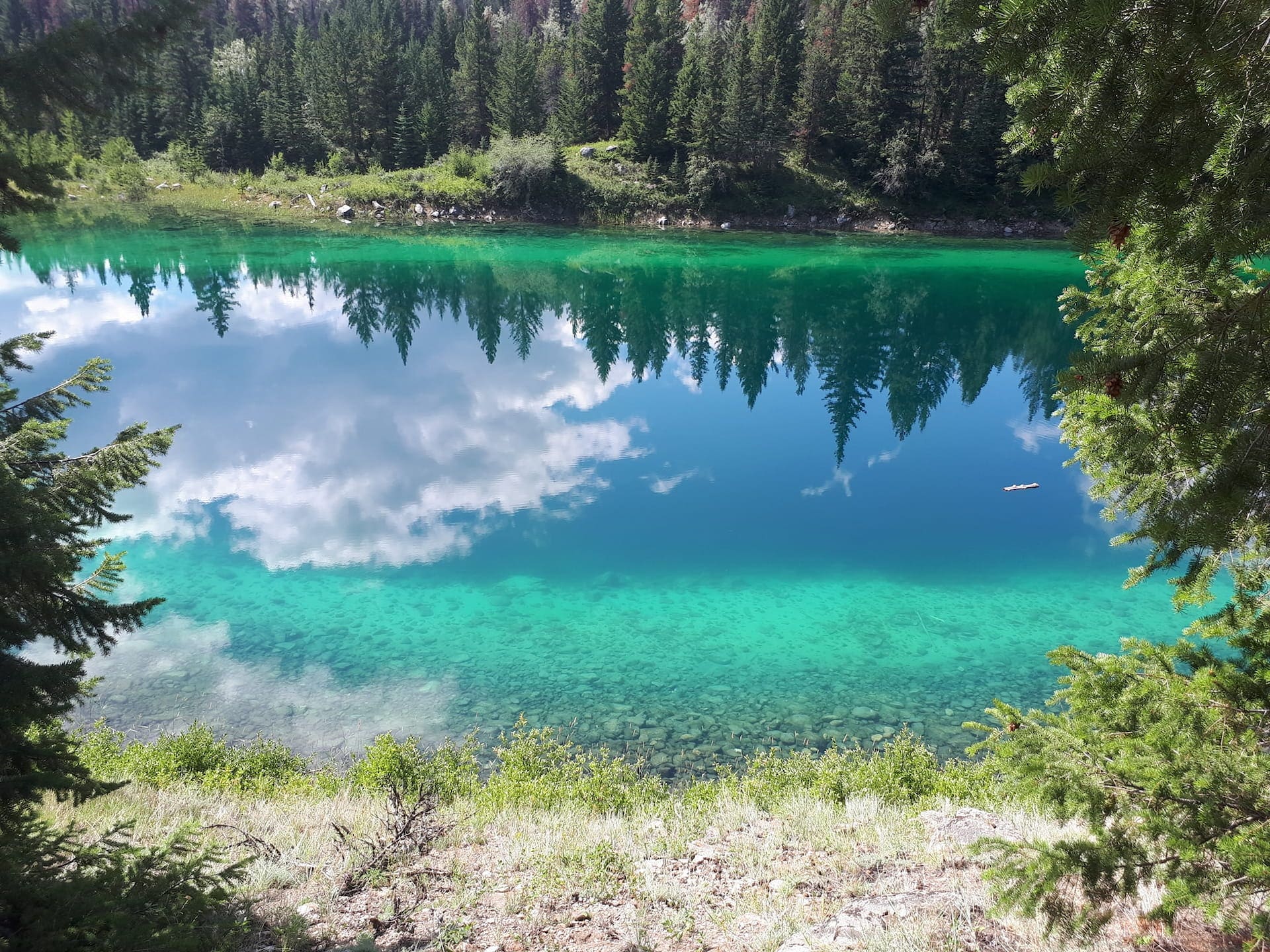Human-powered boats are a great way to experience Alberta’s incredible scenery get active and have some fun. Why no engines? Without motors you have far more flexibility with your rig and with where you can go. Motorboats can be more expensive harder to transport and have fewer places they’re allowed in the interest of preserving the environment quiet and safety.
In no particular order here are our top 5 best boats to bring camping:
- Kayak
- Canoe
- Inflatable Row Boat
- Paddleboards
- Inner Tubes
The Kayak
A kayak is a small boat that typically has a closed deck with a cockpit propelled by a double-bladed paddle. They’re made from a variety of materials including wood cloth fibreglass and plastic and come in many different sizes and designs. They’re also available at a variety of price points and a commonly found rental boat at lakes.
Operating a kayak is pretty easy and a great exercise. Paddle on your own or get a two-person kayak to explore with your kid or a partner.
You can transport a kayak by using a kayak rack that can be secured to your vehicle’s roof in a truck bed or to the back of your RV. Just make sure they’re secure and you attach a red flag to the points if there’s an overhang. Don’t forget to take your new vehicle height into account either!
Here’s a helpful article for finding the right kayak .

The Canoe
A canoe is a narrow open boat that is usually pointed at both ends. It’s generally designed for one or two paddlers who sit or kneel to use a single-blade paddle. They’re generally made from wood aluminum and composite materials. Canoes are great because you can fit the whole family in and are a great way to relax on the water. They’re also durable – which may be why they’re generally more costly than the other boats on this list.
Transporting a canoe is similar to transporting a kayak – secure it to a rack on your vehicle or RV.
If you’re looking to get a canoe check out this canoe buying guide .
The Inflatable Rowboat
Inflatable rowboats are a fantastic and budget-friendly option. Generally they’re made of layers of rubber and/or plastic composites and propelled by two oars in pivots. They come in many different sizes and are great for floating down a quiet river or paddling around a lake. They can be less hardy but the good boats will last a long time.
Another awesome thing about the inflatable rowboat is that it’s very easy to transport – just deflate it and stick it in your trailer or vehicle! We suggest investing in a pump you can plug into your vehicle or trailer as well as bringing a smaller air pump.

Paddleboards
Paddleboards are all the rage and for good reason – they’re super fun! Unfortunately they’re going to cost about the same or more as a kayak unless you can find a good sale. Inflatable paddleboards are also an option – one that’s usually more affordable.
Paddleboards must also be transported like a kayak are canoe especially the proper boards as they’re around 12 feet in length. The paddler stands on the surfboard and uses a long paddle (it should be 8-10 inches taller than you).
Here’s a guide to buying a stand-up paddleboard if this is the boat for you.
Inner Tubes
Another budget-friendly option that is great for kids and for lazily floating away a summer afternoon. They’re also easily transportable and available in a huge variety of sizes shapes and designs. Some even have handles and cupholders!

Do I need a boating license?
You don’t need a boating license or proof of competency for any of the boats on this list. However it’s important to be aware of water safety and rules especially if there are motorized boats or you’re out in the ocean.
Clean Drain and Dry Your Boat
Properly cleaning draining and drying your boat helps prevent the spread of invasive species and diseases. Whenever you pull your boat out of the water you should:
- Clean and inspect your boat and gear – remove all mud sand and plants and rinse and scrub your boat with hot water away from drains ditches or waterways
- Drain all water from your boat and its bait buckets ballasts bilges coolers internal compartments et cetera
- If your boat has a drain plug remove it
- Let your boat try before transporting it (air dry or towel dry)
If you see a sign saying a watercraft inspection site is open and you’re transporting a boat you must stop and have your equipment checked for invasive species.
Fishing
If you plan on doing some fishing with your boat make sure you get the proper license – you’ll need it no matter where you fish. It’s also important that you know how to identify the fish you catch or plan to release all catches.
Safety in the Water
If you’re new to paddling you should take some lessons and learn about water safety. Paddle Alberta is a great resource for both. You can also check out the Government of Canada’s safe boating guide .
Here are a few things to keep in mind when you’re on the water:
- Ensure you’re visible – choose bright colours for your boat and floatation devices you should also have signalling devices on you
- Wear a lifejacket!
- Avoid consuming alcohol or cannabis and boating as it impairs your decision-making and reaction times.
- Don’t overload your boat.
Boat Insurance
Unless you’re buying a sailboat or something high-value you probably won’t need separate boat insurance. You should contact your home insurance provider to add your boat to your home insurance policy to ensure you’re protected. You can also talk to one of our boat insurance brokers today to see what your options are.

